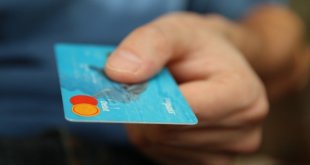Get Into a Frugal State of Mind
First and foremost, being frugal is a lifestyle choice and requires some serious commitment.
I’m far from one of those amazingly motivated people who manage to wake up and go running or swimming in the morning. I have friends like this and it almost feels like fitness and healthy living run in their blood. While I don’t possess this seemingly innate motivation to stay fit, I have been through stages where I’ve gone to the gym, taken regular dance classes, or joined a sports team. But, like anything else, I struggled through it and although things got easier after a while, I’ve never been able to keep it up for extended periods of time.
Guess what. Confession time: I feel the same way about managing my personal finances. It is a struggle!
Deciding to reexamine your financial situation and work towards a goal, such as buying a home or saving up for a vacation to Hawaii, requires a huge amount of dedication, patience, and perseverance. Choosing to make healthier financial decisions can be just as challenging – and important – as choosing to make healthier choices for your body. But, here are some of the basic “exercises” I always fall back on to help me get back in shape.
Set a Clear Financial Vision
Most people skip this step entirely and jump right into the numbers, but actually this is a crucial step in planning out your frugal lifestyle. If you don’t know where you want to be headed, how can you properly stay on course? Sit down, self-reflect, talk to your partner, and even create a “mood board” that reflect where you want to be in a year, 5 years, or 10 years. I imagine this can sound hokey, but you need to get a good picture of what you want from your life. Is travel important to you? Are you looking to have children in the next few years? Do you want to buy a house? This exercise is about setting goals – both in the physical sense (e.g., I want to buy a house within 2 years), but also on a deeper level (e.g., I want to build a certain kind of family and lifestyle).
Track Your Spending
To this day, my mom carries around her checkbook and logs every transaction. She gets upset at the end of the month if she is a penny off from the balance started by her bank. I didn’t inherit this gene, unfortunately. However, with today’s technology, keeping track of your expenses isn’t as awful as it sounds. I started using Mint on my iPhone and after an easy initial set-up, it’s really simple to see the flow of your money. It even includes a breakdown of how you are spending your money (based on your credit card purchases) so you have a better picture of your money spending behavior. You can check out our post on finance apps for the iphone here. In addition to this, you’ll need to start saving receipts in order to start building a complete monthly budget worksheet.
Build a Monthly Budget
If you are like me, Excel, calculations, and even simple mathematics is a tad scary. But, once you get started creating your budget worksheet (in whatever way is best for you), you’ll be happy you took the plunge. If you’ve already started tracking your expenses, especially through a software or app, building a monthly budget is much easier. Take the information you are getting from these programs and export them or manually convert them into an excel file. For those of us who prefer the paper and pen, be prepared to break out the graph paper! Similarly, you can find templates online, like this one from Frugal Living.
Organize your monthly expenses into categories, such as “housing,” “food,” “entertainment,” “medical,” “auto,” and “savings.” Add up all the money from the categories combined and compare it to how much you are receiving in your paycheck (after taxes). Continue to keep track of this daily – and make sure you are up to date at the end or beginning of each month. You will begin seeing a pattern and you’ll have a better idea on how much you are saving each month – and how much more you can potentially save.
At this point, decide how much you want to save each month and how it might be possible. For example, maybe you don’t need to do so much clothing shopping every month or perhaps you can disconnect your cable service. You will be able to make smart and effective decisions with your monthly budget ledger in front of you.
The next steps are to give your budget ideas a try! See what it is like when you cut back on clothing shopping. Does it have an impact on your savings towards your goals? If it doesn’t seem to be working, try another way. Give your budget ideas a test run, refine as needed, and repeat! Stick to your budget as much as you can and keep up with the routine or tracking your expenses. You will find your path to your higher life goals and start living a healthy frugal lifestyle.
Featured image courtesy of Stuart Miles at freedigitalphotos.net
 All The Frugal Ladies Personal finance with a feminine touch
All The Frugal Ladies Personal finance with a feminine touch







